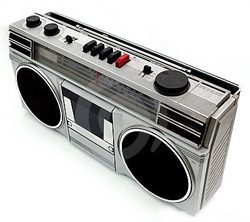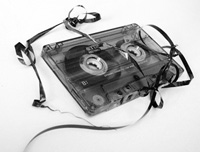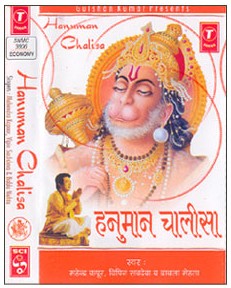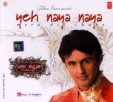Cassettes
TWO IN ONE
Between the early 1970s and the late 1990s, the cassette was one of the two most common formats for prerecorded music, first alongside the LP and later alongside the Compact Disc.
 Also known as an “audio cassette,” “compact cassette,” or “tape,” the cassette tape was first manufactured by Phillips in the 1960s and became mass-produced by 1964. The advantage of audio cassettes was that they were more portable than records. But the sound quality was not good but with advent in 1969 of Dolby Noise Reduction the unpleasant hiss that accompanied the sound on cassettes was cut down. After undergoing several upgrades to improve its sound quality and functionality during the 1970s, the cassette tape soared in popularity during the 1980s with the introduction of hand-held cassette players such as the Walkman. Cassette players also took over domination of the car sound system market adding further flexibility and convenience to the enjoyment of recorded music. Cassettes remained popular for specific applications, such as car audio, well into the 1990s but by the early 2000s, the CD player rapidly replaced the cassette player in the majority of new vehicles.
Also known as an “audio cassette,” “compact cassette,” or “tape,” the cassette tape was first manufactured by Phillips in the 1960s and became mass-produced by 1964. The advantage of audio cassettes was that they were more portable than records. But the sound quality was not good but with advent in 1969 of Dolby Noise Reduction the unpleasant hiss that accompanied the sound on cassettes was cut down. After undergoing several upgrades to improve its sound quality and functionality during the 1970s, the cassette tape soared in popularity during the 1980s with the introduction of hand-held cassette players such as the Walkman. Cassette players also took over domination of the car sound system market adding further flexibility and convenience to the enjoyment of recorded music. Cassettes remained popular for specific applications, such as car audio, well into the 1990s but by the early 2000s, the CD player rapidly replaced the cassette player in the majority of new vehicles.
 The real revolutionary component in cassette tape technology was its capacity to allow people to record their own music easily and cheaply at home. This sparked the rise of blank cassette tapes sold for commercial use and led to widespread recording piracy. You can argue about the ethics of this but cassette technology in the 80s empowered listeners as never before and dramatically widened the market for prerecorded music. In order to meet this increase in demand, affordable equipment such as portable cassette players, both audio and stereo, and two-in-ones came on the market. The industry had changed as a whole and prerecorded music was now within reach of ordinary villagers in developing countries such as India.
The real revolutionary component in cassette tape technology was its capacity to allow people to record their own music easily and cheaply at home. This sparked the rise of blank cassette tapes sold for commercial use and led to widespread recording piracy. You can argue about the ethics of this but cassette technology in the 80s empowered listeners as never before and dramatically widened the market for prerecorded music. In order to meet this increase in demand, affordable equipment such as portable cassette players, both audio and stereo, and two-in-ones came on the market. The industry had changed as a whole and prerecorded music was now within reach of ordinary villagers in developing countries such as India.
 Take Gulshan Kumar’s T-Series in India. In 1978-79, it is believed he gained a foothold in cassette production and distribution through massive illegal reproduction of cassettes produced by the established labels. He1 represented a new breed of entrepreneurship who together with others who followed in his wake changed the rules of the game. Music was controlled by cliques and monopolies. But he flooded the market with scores of musicians and singers whom nobody had ever heard of such as Kumar Sanu and Sonu Nigam. By doing so he dragged down cassette prices and skipped the record shop route to encourage panwallahs and grocers to sell their product. In the process, he quadrupled the size of the market.2
Take Gulshan Kumar’s T-Series in India. In 1978-79, it is believed he gained a foothold in cassette production and distribution through massive illegal reproduction of cassettes produced by the established labels. He1 represented a new breed of entrepreneurship who together with others who followed in his wake changed the rules of the game. Music was controlled by cliques and monopolies. But he flooded the market with scores of musicians and singers whom nobody had ever heard of such as Kumar Sanu and Sonu Nigam. By doing so he dragged down cassette prices and skipped the record shop route to encourage panwallahs and grocers to sell their product. In the process, he quadrupled the size of the market.2
 Audio cassettes also served as catalysts for social change as prerecorded sound could now be easily used for propaganda purposes at very low cost. Cassettes broughtunderground rock and punk music behind the Iron Curtain, creating a foothold for Western culture among the younger generations there. In India in the 70s they were blamed for bringing unwanted secular influences into traditionally religious areas.3
Audio cassettes also served as catalysts for social change as prerecorded sound could now be easily used for propaganda purposes at very low cost. Cassettes broughtunderground rock and punk music behind the Iron Curtain, creating a foothold for Western culture among the younger generations there. In India in the 70s they were blamed for bringing unwanted secular influences into traditionally religious areas.3
Despite being overtaken in popularity by the CD in the late 1990s, in some countries, particularly in developing ones, cassettes still remain the dominant medium for purchasing and listening to music.

More Photos



